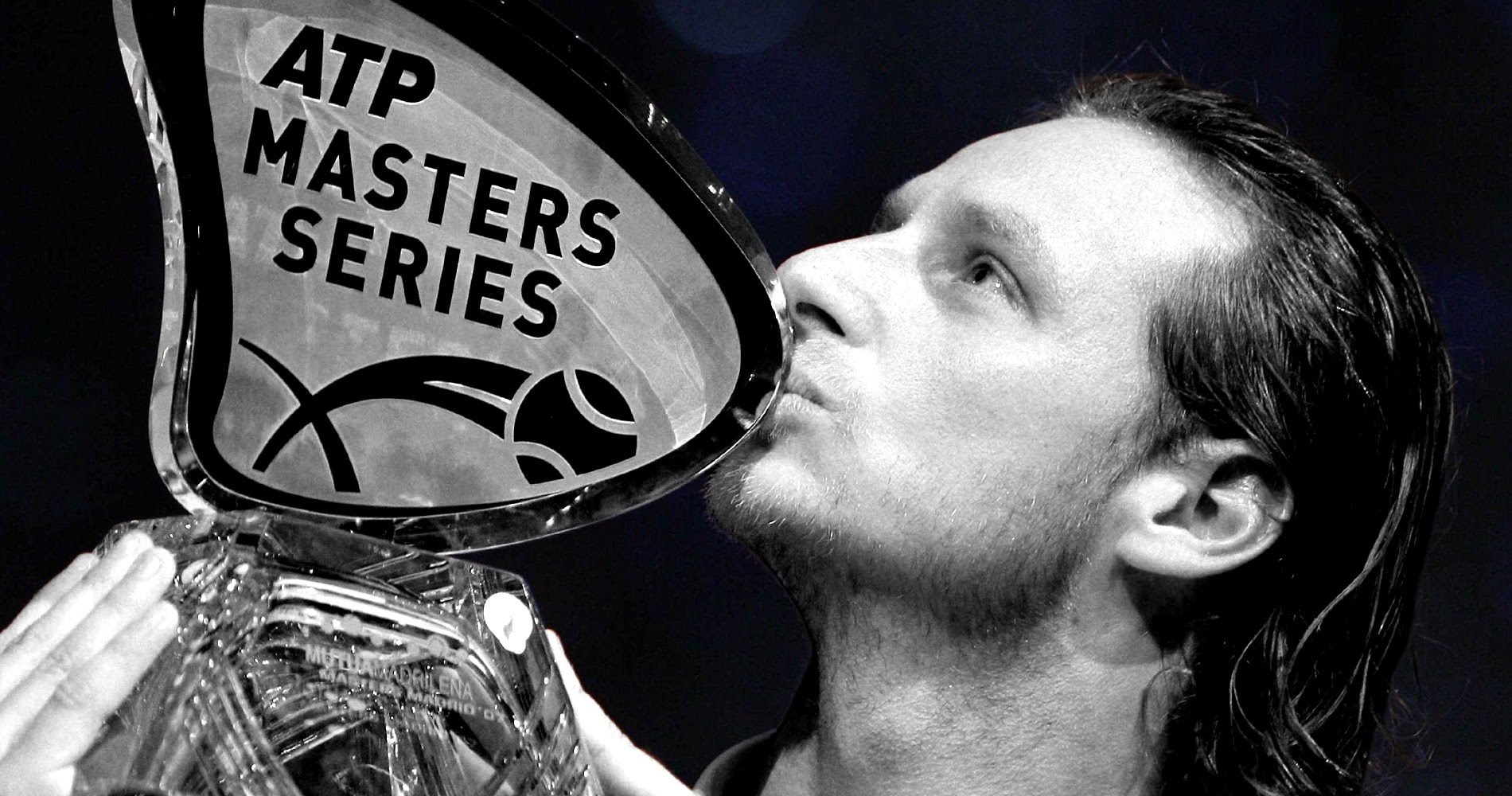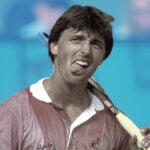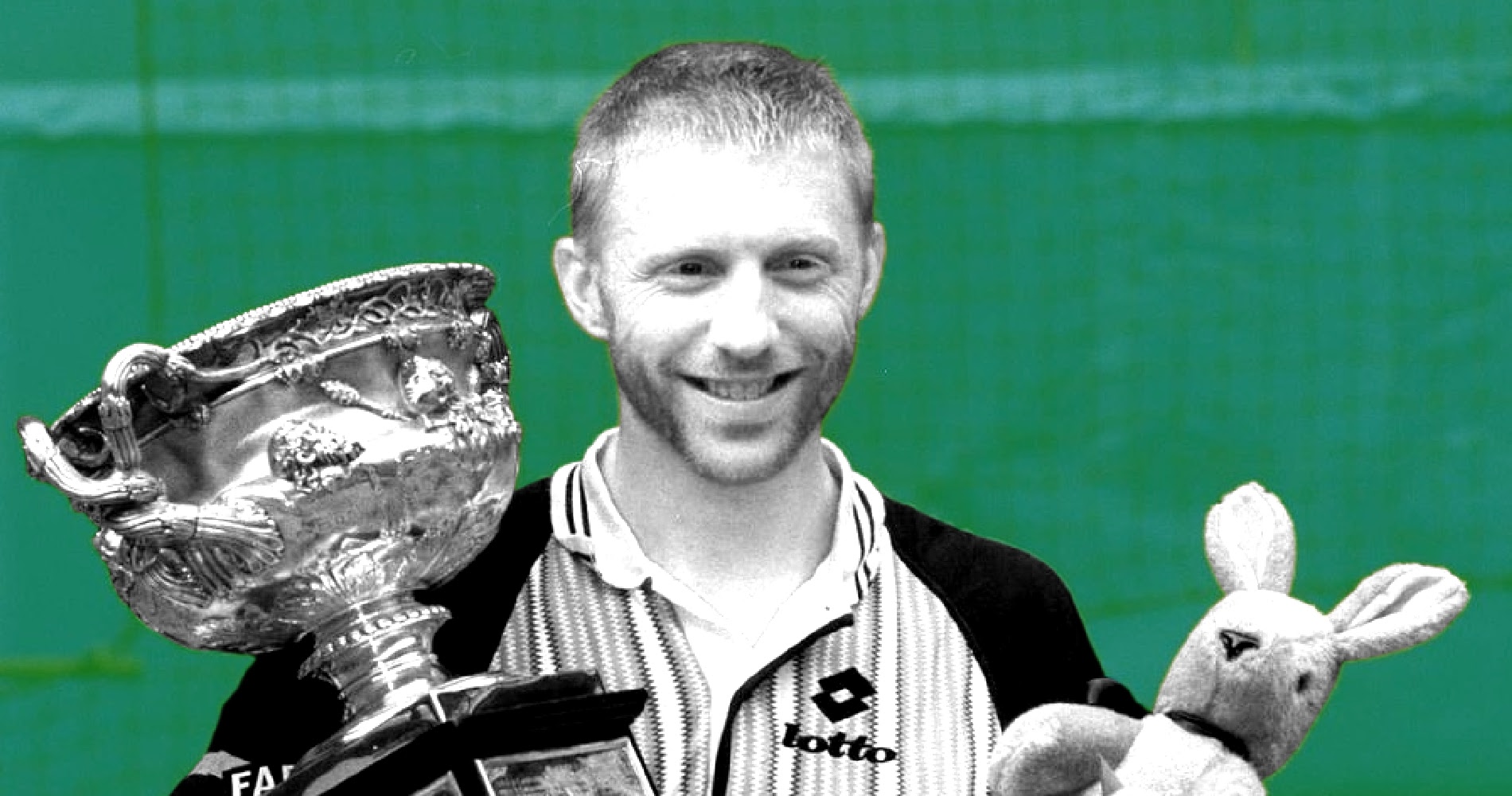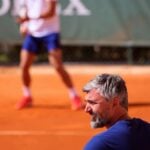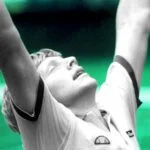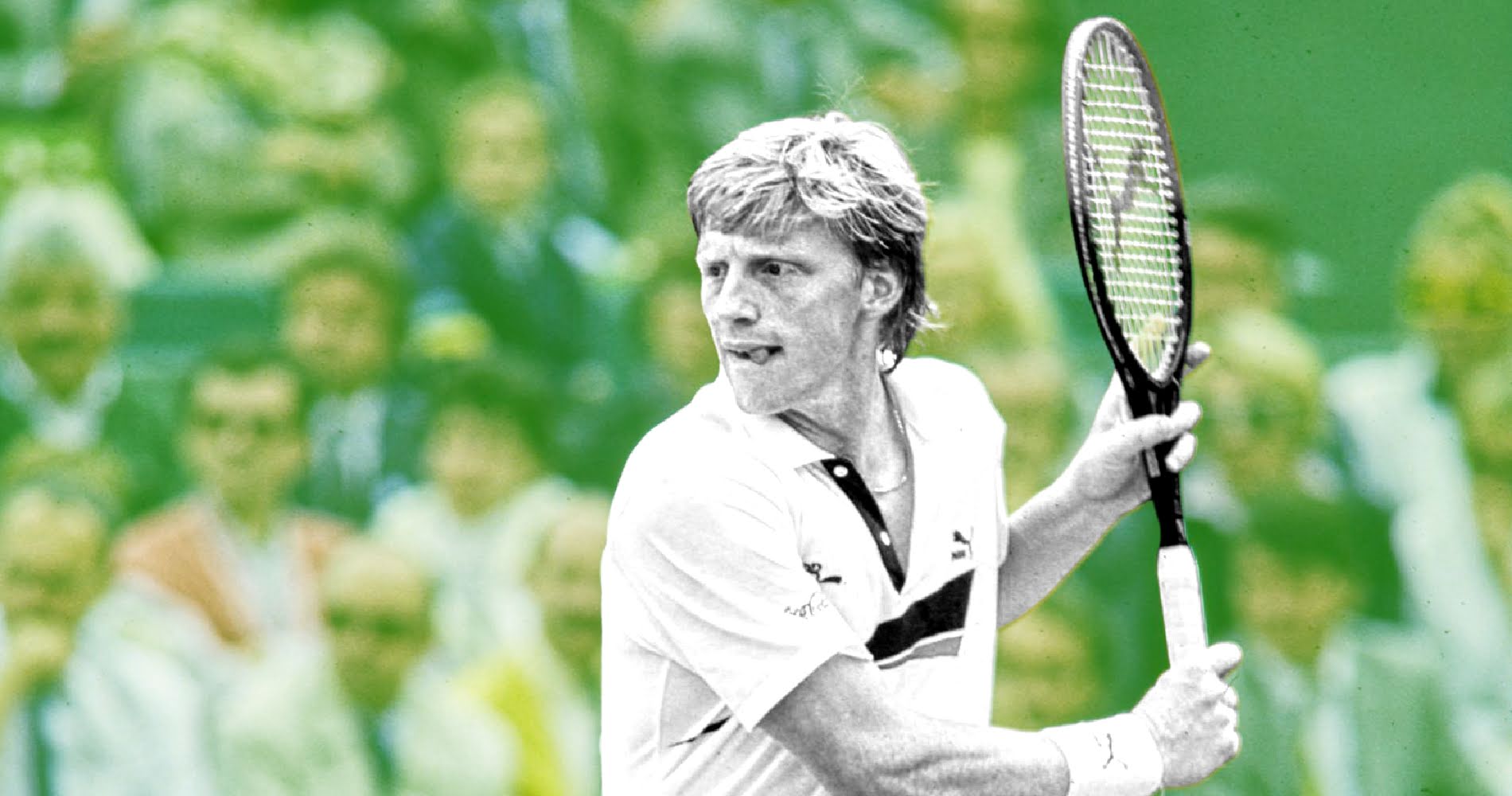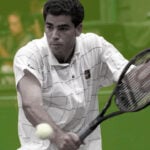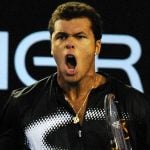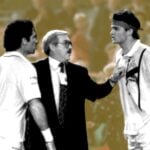October 30, 1994: The day Boris Becker became the first man in the Open Era to beat the world’s top three at the same event
After a disappointing US Open in 1994,, the German beat Michael Stich, Pete Sampras and Goran Ivanisevic back-to-back
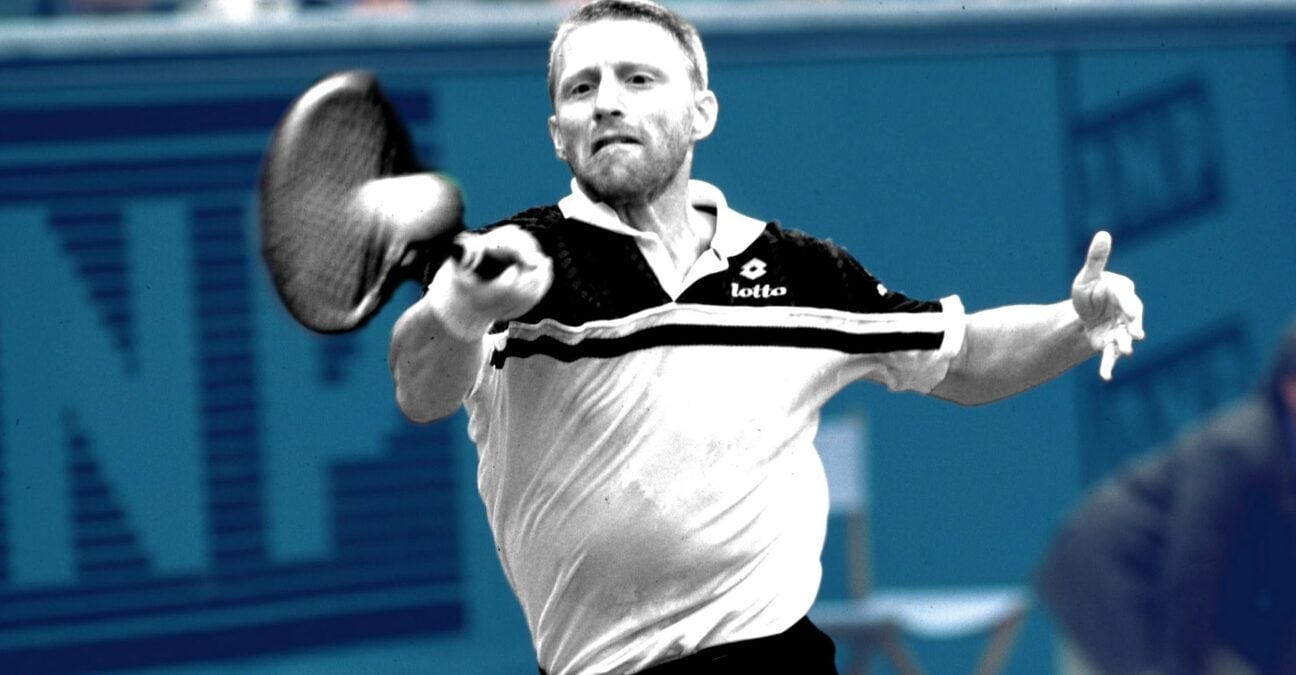 Boris Becker, On this day 30.10.2020
Image Credit – © Panoramic / Tennis Majors.
Boris Becker, On this day 30.10.2020
Image Credit – © Panoramic / Tennis Majors.
What exactly happened on that day?
On this day, October 30, 1994, Boris Becker won the Stockholm Open after defeating the top three players in the world consecutively: No 3 Michael Stich in the quarter-finals (7-6, 6-3); top-ranked Pete Sampras in the semi-finals (6-4, 6-4); and world No 2 Goran Ivanisevic in the final (4-6, 6-4, 6-3, 7-6). After his disappointing loss in the first round of the US Open, this unprecedented feat was also a great way for Becker to remind the tennis world that he was still capable of playing top-flight tennis in the big events.
The players: Boris Becker and Goran Ivanisevic
- Boris Becker: The German who Boom Boomed his way to three Wimbledon titles
Boris Becker was born in 1967 in Leimen, Germany. In 1985, he became the youngest ever men’s Wimbledon champion at the age of 17, beating Kevin Curren in the final (6-3, 6-7, 7-6, 6-4). In all, he would win three titles at the All England Club – the setting of his famous rivalry with Swede Stefan Edberg. The two players would face each other there in the final in three successive years with Becker winning only once, in 1989 (6-0, 7-6, 6-4), although he was way ahead in their general head-to-head (25-10 by the time their careers came to an end).
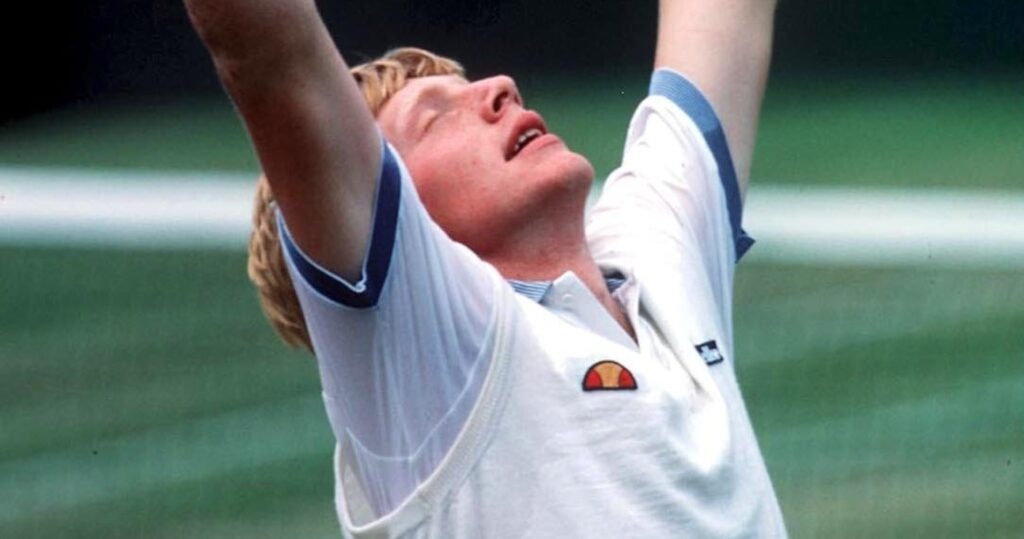
Becker’s powerful serve, which he usually followed to the net, earned him the nickname “Boom Boom”. He was famous for his spectacular diving volleys, as well as for his dramatic play and emotional outbursts. His peak years were undoubtedly 1989 to1991. During that period, he won three Grand Slam titles, and he eventually reached the world No 1 spot on January 28, 1991 after beating Ivan Lendl (1-6, 6-4, 6-4, 6-4) to claim his first Australian Open crown. Becker then struggled in the following seasons, and in 1993, he even exited the top 10 for the first time in eight years.
In 1994, he reached the semi-finals at Wimbledon (defeated by Goran Ivanisevic, 6-2, 7-6, 6-4), but at the US Open, despite a good summer swing during which he won titles in Los Angeles and New Haven, he lost in the first round against Richey Reneberg (6-1, 6-4, 4-6, 1-6, 7-6).
- Goran Ivanisevic: The Croatian who rode his serve to two Wimbledon finals
Goran Ivanisevic was born in 1971 in Split, Croatia, and had his breakthrough year in 1990 when he was just 19. That year, he made himself famous by reaching the quarter-finals at Roland-Garros after defeating Becker, then ranked No 3, in the first round, and followed it up by reaching the Wimbledon semi-final where it was the same Becker who beat him (4-6, 7-6, 6-0, 7-6).
In 1991, his season was disturbed by issues in his country as Yugoslavia was ravaged by civil war and he couldn’t focus on tennis. In 1992, he returned to the top and, firing 206 aces during the fortnight, he reached the Wimbledon final where he was defeated in five sets by Andre Agassi (6-7, 6-4, 6-4, 1-6, 6-4).
Over the following five years, Ivanisevic remained a solid top 10 player, claiming 14 titles and reaching at least the quarter-finals at every Grand Slam tournament. In 1994, after reaching a second Wimbledon final (lost to Pete Sampras, 7-6, 7-6, 6-0), he achieved his highest ranking as world No 2. Left-handed, the Croat’s attacking game relied mostly on an extremely precise serve: in 1993, he was even booed by the audience in the Paris-Bercy final because he was serving far too many aces. Ivanisevic was also known for his emotional outbursts and his habit of smashing an unusually high number of rackets.
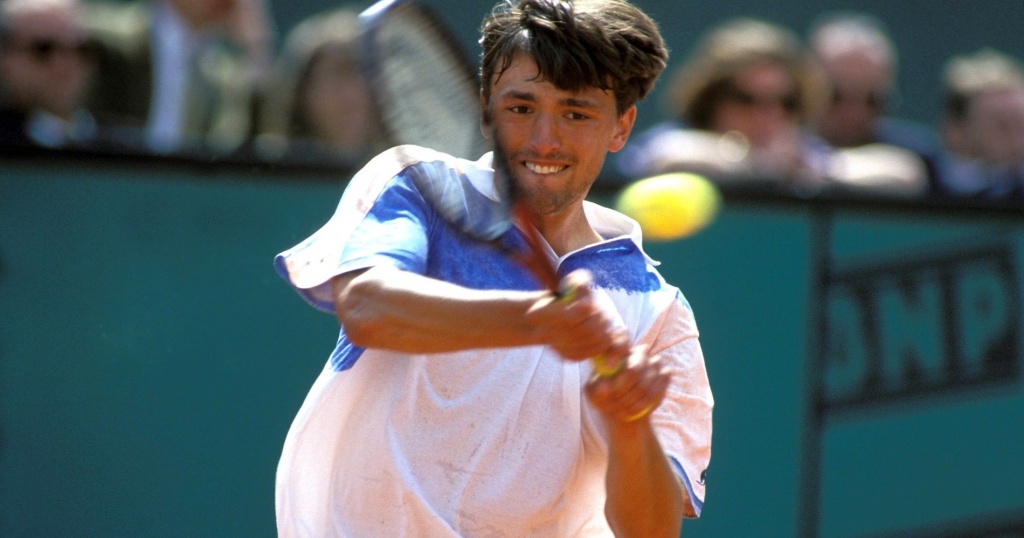
The place: The Stockholm Globe Arena
The Stockholm Open was founded in 1969. Originally held at the Kungliga Tennishallen, the tournament moved to Stockholm Globe Arena in 1989. Played every year on indoor hard courts, it was a prestigious event which had been won by tennis greats such as Arthur Ashe (1971, 1974), John McEnroe (1978, 1979, 1984, 1985), Bjorn Borg (1980), Ivan Lendl (1989) and Stefan Edberg (1986, 1987). Becker had already triumphed three times in Stockholm, in 1988, 1990 and 1991.
The facts: Becker loses first set but fights back to win in three
After a disappointing 1993 season, Boris Becker was trying to get back to the top in 1994. He had reached the semi-finals at Wimbledon and claimed two titles during the American hard courts summer swing but had suffered a bitter loss to 48th-ranked Richey Reneberg in the first round of the US Open.
In Stockholm, Becker began his tournament avenging his US Open loss by beating Reneberg, 7-6, 6-1. After he eliminated Andrei Chesnokov in the second round (6-4, 6-3), he faced his countryman, Michael Stich, ranked No 3 in the world, in the quarter-finals. The two Germans were known not to be the best of friends, so it was certainly a satisfaction for “Boom Boom” to prevail 7-6, 6-3. In the semi-finals, his opponent was Pete Sampras, the world No 1, who had beaten Becker in their four previous encounters. This time, though, the German won in straight sets, 6-4, 6-4, to set up a final clash against second-ranked Ivanisevic.
No one had yet managed to beat the top three ranked players in the same tournament in the Open Era. Becker had already faced the Croat no less than 10 times and even though he led their rivalry 6-4, he had lost to him in their last encounter at Wimbledon (6-2, 7-6, 6-4). The left-hander from Split was particularly dangerous indoors because of his deadly serve, but so was Becker.
In a battle of serve-and-volleyers, the German overcame the loss of the first set and eventually prevailed. Not only was he almost impossible to pass, but he was also more consistent than his opponent on his return games. Becker won the final in four sets 4-6, 6-4, 6-3, 7-6. He had become the first player in the Open Era to beat the three best players in the world in the same tournament.
What next? Becker and Ivanisevic face off again a few weeks later
The two players would face off again just a few weeks later, in the round robin stage of the Masters Cup and Becker would prevail for a second time in a row (6-3, 3-6, 7-6).
Becker would finish runner-up to Sampras at Wimbledon in 1995, and would then win a sixth and final Grand Slam crown at the 1996 Australian Open, defeating Michael Chang in the final (6-2, 6-4, 2-6, 6-4) before declining until his eventual retirement in 1999.
His feat of beating the three best players in a row would remain unique in the Open Era until 2007, when Novak Djokovic would achieve it as well (defeating Andy Roddick, Rafael Nadal and Roger Federer to triumph in Montreal), followed by David Nalbandian (who beat Djokovic, Nadal and Federer to claim the title in Madrid the same year) on the men’s side.
Ivanisevic would lose a third Wimbledon final in 1998, against Sampras (6-7, 7-6, 6-4, 3-6, 6-2). This loss would devastate him and he would decline in the following years. In 2001, entering the Wimbledon draw as a wild card entrant ranked No 125 in the world, he would eventually realize his lifelong dream by beating Patrick Rafter in the Wimbledon final (6-3, 3-6, 6-3, 2-6, 9-7). Suffering from a shoulder injury, the Croatian would then play infrequently on the Tour and would officially retire from the sport in 2004.
Both players would return to the Tour as coaches – even coaching the same player – Novak Djokovic – at different times during the Serb’s career.
